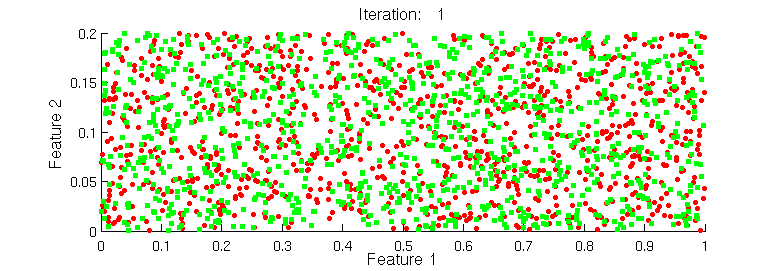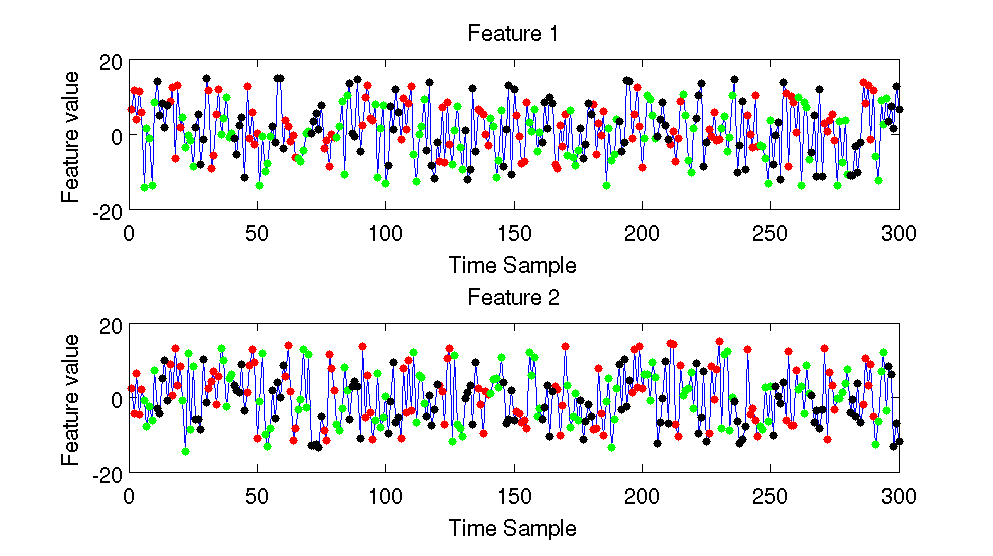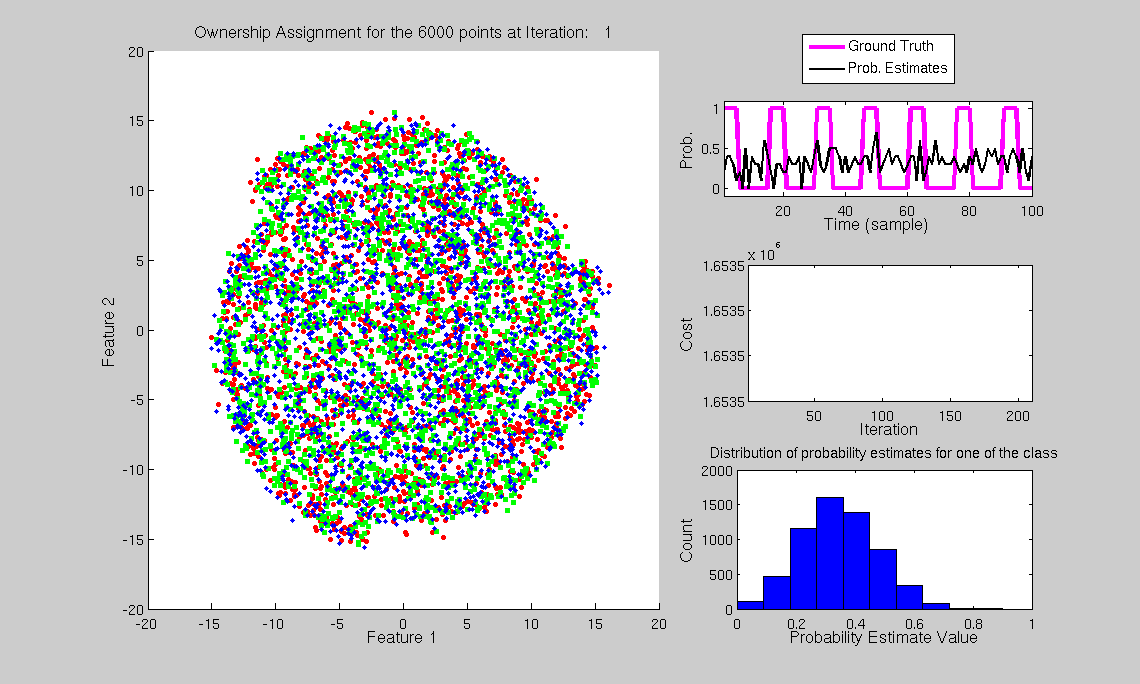keywords: hidden Markov Model, k-Nearest Neighbor, unsupervised learning, clustering time-series, segmentation of time-series, temporal coherence, spatial coherence, terrain identification, terrain classification, proprioceptive sensors, matlab, actuator, motor electrical current.
The clustering technique we developped is applicable to systems that tend to stay in the same state over time, or over distance. That is, we targeted systems that display continuity.
It is quite simple: what we do is we train a classifier using the equation below. If you look closely, you'll see that the numerator is the squared difference over time of the probability p computed by the said classifier. This, of course, is smaller if p doesn't change much over time. The numerator avoids the trivial solution where p is the same all the time. It has also other theoretical properties, which you can read in the paper.
 |
| Equation used for the
clustering. Theta
is the classifier parameters. We used this equation on three different
classifiers: linear separator, mixture of Gaussians, and k-Nearest
Neighbor. |
Example
1
 |
| Subset of data samples used in
the clustering problem below. Circle color indicates ground truth. |
 |
| Example of clustering for a
2-classes problem, with 20 distinct regions in feature space and 2000
points. |
Example
2
 |
| Subset of data samples used in
the clustering problem below. Circle color indicates ground truth. |
 |
| Example of clustering for a
3-classes spiral problem, with 6000 points. |